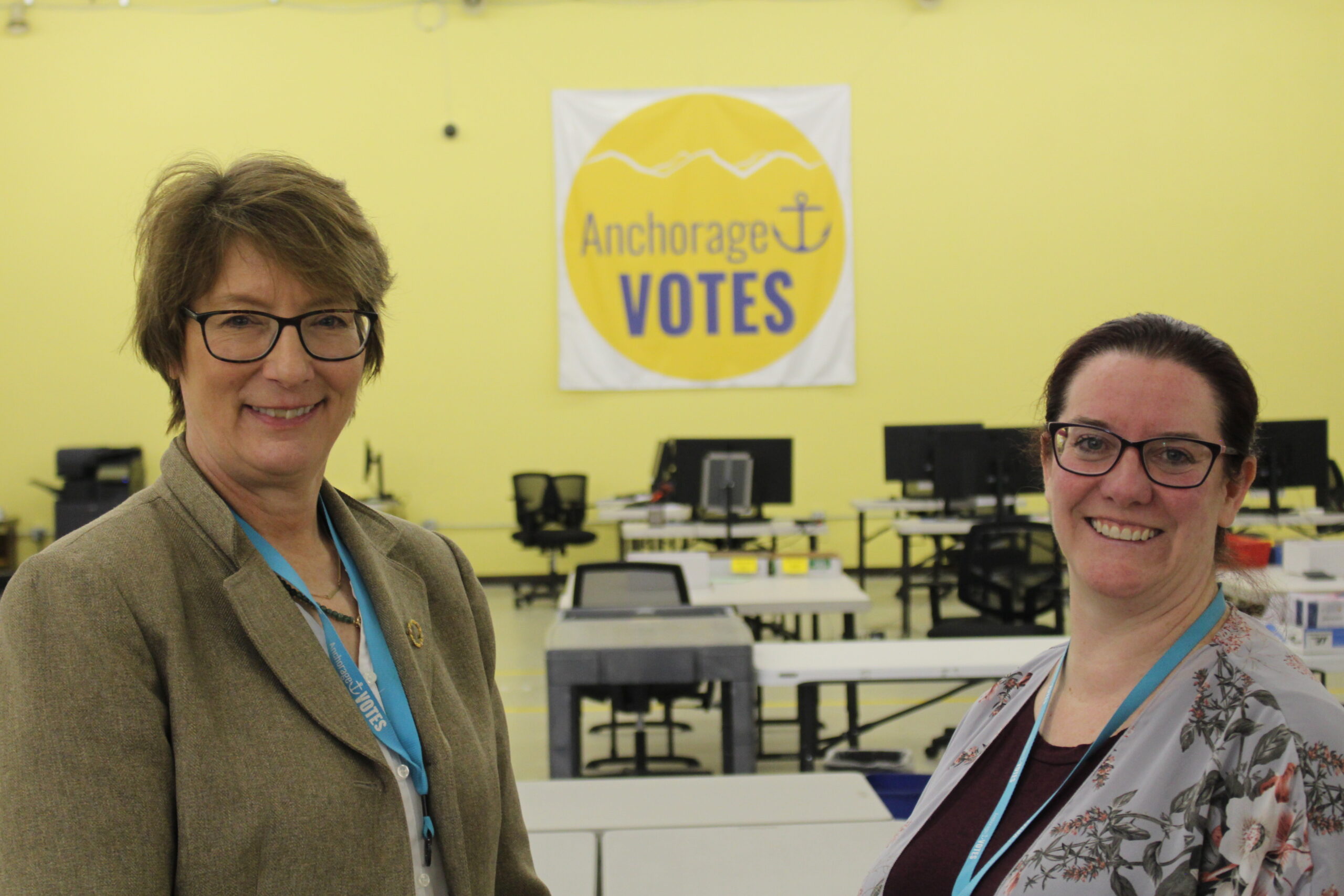
Anchorage’s municipal election was certified on Tuesday night, with new Assembly members Scott Myers, Zac Johnson, Anna Brawley, George Martinez and Karen Bronga joining the 12-member body. Incumbents Chris Constant and Felix Rivera survived their reelection bids as well.
About 28% of registered Anchorage voters cast a ballot in the election. It’s the lowest voter turnout since the city moved to by-mail voting. But election officials say it’s still higher than in years before the change.
The city switching to mail-in elections stemmed from concerns about turnout. Historically, voter turnout has been all over the place. The highest years were in the 1980s. Three elections had more than 50% turnout. Then, by 2010, turnout plummeted to less than 20%, and municipal clerk Barbara Jones said local politicos started taking notice.
“In 2015 and 2016, former Assembly member Ernie Hall was concerned about voter turnout,” Jones said. “And he asked the clerk’s office to look into what we could do to increase voter turnout.”
Enter: Mail-in elections.
After multiple public meetings, the city decided to move to by-mail voting. The first election under the new system was held in 2018, and turnout topped 36% — the highest in 20 years. Every year since has had turnout above 25%, including this year, a non-mayoral election.
“I do think that voter turnout has increased, so Ernie Hall’s experiment was successful,” Jones said.
Election officials say vote-by-mail is not only better for turnout, but it also relies on fewer staff, provides more flexibility for voters and is now cheaper.
Elections clerk Jamie Heinz said the first by-mail election did cost double as the city acquired a new election center and equipment to scan and tabulate ballots. But now, the price has dropped significantly.
“So now that we are using that over and over, year over year, the costs are going down,” Heinz said. “The cost per voter is less.”
Before mail-in voting, the city’s cost per voter was between $9 and $11. Now the figure is down to just under $8. The number of election staff required is also way smaller — down from 600 to 60.
Still, the mail-in system is not without its detractors. Some question how secure the system is, with some voters reporting that they’ve received other people’s ballots in the mail.
Heinz said even if somebody tries to vote with another person’s ballot, there are parameters in place to prevent it from being counted.
“What stops it from being counted is that the signature isn’t going to match,” Heinz said. “We get five signatures from the state, and we have a team of five people who do signature verification. They’re trained by forensic document examiners, and they’re trained to look for characteristics of signatures.”
Heinz said there could also be criminal consequences if someone tries voting with someone else’s ballot.
“There were, I think, six situations, and APD did go knock on their doors,” Heinz said. “And we think most of the time it was a clear misunderstanding of the laws, but I think they understand it quite well now.”
Jones invited residents who may be skeptical about the mail-in process to go to the downtown voting center. If they can’t make it, there’s a 24-hour live stream during elections.
“It’s videoed so people can watch it at home,” Jones said. “And I think that’s probably the most important thing that we’ve done is that elections in Anchorage are more transparent.”
Wesley Early covers Anchorage life and city politics for Alaska Public Media. Reach him at wearly@alaskapublic.org and follow him on X at @wesley_early. Read more about Wesley here.





